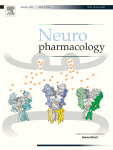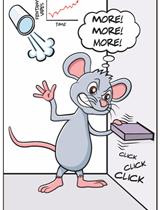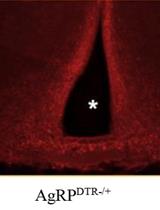- EN - English
- CN - 中文
Use of the Vsoc-maze to Study Sociability and Preference for Social Novelty in Rodents
利用Vsoc-maze研究啮齿动物的社交能力和社交新奇偏好
(*contributed equally to this work) 发布: 2019年10月20日第9卷第20期 DOI: 10.21769/BioProtoc.3393 浏览次数: 4165
评审: Arnau Busquets-GarciaJD Li Anonymous reviewer(s)
Abstract
Studying social behavior in mouse models empowers the understanding of the neurobiological mechanisms involved, which are affected in neuropsychiatric disorders, allowing the evaluation of therapeutic strategies. Behavioral methods available are time-consuming and reducing the length of behavioral sessions may render more manageable experiments and reduce animal stress. We validated a new reliable and sensitive method to study two features of social behavior (sociability and preference for social novelty) in two strains of male mice, the C57BL/6J inbreed strain and the CD1 (ICR) outbreed strain, using a modified version of the V-shaped maze (Vsoc-maze). The Vsoc-maze for sociability and preference for social novelty improves time performance by shortening the length of the sessions, and reduces variability compared to the classical approach performed in the three-chamber apparatus. Altogether, the Vsoc-maze allows evaluating the specific alterations of social behavior in mice in a time-efficient and reproducible manner.
Keywords: V-maze (V-迷宫)Background
Social behaviors are important in numerous species to establish the networks and relationships that define social communities (Berry and Bronson, 1992). Among those behaviors, sociability is defined as the tendency to seek out social interaction (Caldwell, 2012). Some neuropsychiatric disorders, such as autism spectrum disorders (ASD) display a marked alteration in sociability combined with other features (American Psychiatric Association, 2013). This characteristic highlights the need for experimental behavioral settings in animal models to address the research on such complex multi-facetted disorders (Caldwell, 2012). Mus musculus is a social specie showing reciprocal social interactions, sexual and parenting behaviors, territorial scent marking and aggressive behaviors (Ricceri et al., 2007; Silverman et al., 2010). The wide repertoire of mouse behaviors makes this specie suitable for modeling human disorders characterized by disruptions in social recognition and social behavior (Crawley, 2004; Yang et al., 2007). Such rodent models warrant the evaluation of potential therapeutic approaches for treatment (Moy et al., 2004). Commonly, mice conserve a characteristic pattern of social behavior, initiating social contact and approach when exposed to an unfamiliar conspecific (Moy et al., 2004).
Several paradigms have been described to measure social behavior in mouse models (Silverman et al., 2010). Among those, the most common is the Crawley’s sociability test also called three-chamber apparatus (Chadman et al., 2008; McFarlane et al., 2008; Moy et al., 2008), which allows to study two different parameters: sociability and preference for social novelty. Sociability is defined as the tendency of the experimental mouse to spend more time exploring an unfamiliar mouse than exploring an object or an empty chamber. Instead, preference for social novelty is defined as the propensity to spend more time exploring a new unfamiliar mouse than the now-familiar mouse that was explored in the sociability phase (Moy et al., 2004; Yang et al., 2011). Due to the length of the different phases in the Crawley’s sociability test, the procedure is time-consuming and experimental variability is sometimes troublesome.
We have adapted a V-maze, previously used successfully to evaluate novel object-recognition memory (Puighermanal et al., 2009; Busquets-Garcia et al., 2011 and 2013; Navarro-Romero et al., 2019), to assess social behavior. We found that the procedure using this new maze (Vsoc-maze) provides an advantageous approach in terms of time, while maintaining accuracy, to reveal particular social phenotypes in two mouse lines frequently used in biomedical research.
Materials and Reagents
- Tissue paper
- Experimental mice (e.g., C57BL/6J and CD1 male mice, 12-16 weeks old, Charles River Laboratory)
- Stranger mice (STR mice) (e.g., juvenile 3-4 weeks old (postnatal day 21 to 28) male C57BL/6J mice, Charles River Laboratory)
- 30% ethanol (v/v)
Equipment
- Vsoc-maze
We used a modified version of the V-shaped maze (Busquets-Garcia et al., 2011) (Vsoc-maze, Figure 1). It consists of two structures: the maze wall (150 mm high), made of black Plexiglas (6 mm width) and the maze lid, made of transparent Plexiglas. Corridors in the Vsoc-maze are 300 mm long and 45 mm wide (internal measures). Two small chambers (82 mm long) were created at the end of the corridors when the lid was inserted into the Vsoc-maze. These chambers were used to allocate the juvenile stranger mice. The design was deliberately simple to enhance the exploratory activity of the experimental mouse under analysis, and to facilitate the handling of the animals and the cleaning between sessions. - Three-chamber apparatus
It consisted in a rectangular box made of Plexiglas (405 mm wide x 600 mm long x 150 mm high) divided in three-identical-chambers (405 mm wide x 200 mm long x 150 mm high) by two Plexiglas walls containing small openings, which measure 100 mm wide x 50 mm high, to allow mouse access between chambers as previously described (Kaidanovich-Beilin et al., 2011). The juvenile stranger mice were enclosed in a round wire cage in the side chambers. The wire cage was 110 mm high x 105 mm diameter and had vertical bars spaced 10 mm, which allow sniffing and exploration. There was a weighted cup on top of the wire cage to prevent the experimental animal from climbing. - Video Camera (e.g., Sony Handycam camcorder, HDR-CX240)
- Stopwatches (x2) (e.g., Sper Scientific, 810029)

Figure 1. Design of the Vsoc-maze. Top view (A and C) and side view (B and D) of the Vsoc-maze and the Plexiglas transparent lid showing its dimensions (in mm) used in Martínez-Navarro et al. (2019). Photographs show the Vsoc-maze with the transparent lid (C), and a detail of the lid which includes the Plexiglas bars for mice to interact (D).Video 1. Vsoc-maze set-up and mouse handling for the test. (All animal procedures were conducted following ARRIVE (Animals in Research: Reporting In Vivo Experiments) (Kilkenny et al., 2010) guidelines and standard ethical guidelines (European Communities Directive 2010/63/EU) and approved by the local ethical committee (Comitè Ètic d'Experimentació Animal-Parc de Recerca Biomèdica de Barcelona, CEEA-PRBB).)
Software
- STATISTICA (StatSoft) software, is used to performed the statistical analysis
- GraphPad Prism software (GraphPad Software, USA) is used for artwork
Procedure
文章信息
版权信息
© 2019 The Authors; exclusive licensee Bio-protocol LLC.
如何引用
Martínez-Torres, S., Gomis-González, M., Navarro-Romero, A., Maldonado, R. and Ozaita, A. (2019). Use of the Vsoc-maze to Study Sociability and Preference for Social Novelty in Rodents. Bio-protocol 9(20): e3393. DOI: 10.21769/BioProtoc.3393.
分类
神经科学 > 神经系统疾病 > 动物模型
神经科学 > 行为神经科学 > 实验动物模型 > 小鼠
您对这篇实验方法有问题吗?
在此处发布您的问题,我们将邀请本文作者来回答。同时,我们会将您的问题发布到Bio-protocol Exchange,以便寻求社区成员的帮助。
Share
Bluesky
X
Copy link













